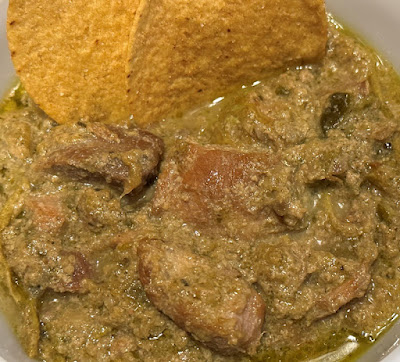Many years ago, on a trip to Brazil to see Halley's Comet, we had several meals in a Churrascaria (barbecue) and they were all served with hearts of palm. Last month, when a friend invited us to a churrascaria-style barbecue, I offered to bring hearts of palm. Searching for a recipe, almost every one I found included tomato and avocado, which I do NOT remember from our trip, but it sounded good so that's what I made, and it was delicious!
Original recipe: Brazillian Chopped Salad
Hearts of Palm Salad with Brazilian Vinaigrette
Serves 6
I made several changes to the original recipe.
For the Lime Vinaigrette:
- 1/4 c. fresh-squeezed lime juice
- 1/4 c. extra virgin olive oil
- 1 large or 2 small cloves garlic, grated on a microplane
- 1 t. honey
- 1 t. himalayan pink salt
- 1/2 t. freshly ground black pepper
For the Salad
- 3 14-ounce jars hearts of palm
- 12 oz cherry or grape tomatoes
- 4 baby cucumbers
- 1/2 small red onion or scallion
- 1 ripe avocado
- 1/4 c. chopped mint (I used apple mint)
For the Vinaigrette:
Combine all ingredients in a small jar. Screw the lid on tight and shake to combine
For the Salad:
Drain the hearts of palm. Cut them into 1/2" rounds, discarding any stalks that are tough. I discarded almost a whole can's worth which is why I start with 3 cans. I don't know if the conventional product contains fewer tough stalks, but the organic product ALWAYS does. If you use the conventional product, please let me know!
Cut the tomatoes in half.
Peel the cucumbers in alternating strips so that they soak up the dressing but still hold their shape. Slice them 3/8" rounds. If you cant get baby cucumbers, slice them into 1/2" rounds and then half or quarter them. They should be about the same size as the hearts of palm.
Cut the onion in half, then slice into very thin strips. You don't want the strips to be too long so, depending on the size of the onion, you may need to halve them again.
Cut the avocado in half and remove the pit. Using a soup spoon, scoop the flesh from both halves and cut it into 1/2" cubes.
Finely chop the mint.
In a large bowl, gently toss all the vegetables together. Drizzle with the dressing and gently toss again. Sprinkle the mint over the top and serve.
Another friend suggested that this could be a complete meal if garbanzos were added. That would not be Brazilian at all, but it would probably be delicious! Let me know if you try it.
I forgot to take a photo! I'll add one the next time I make this, hopefully later this week.
NOTE: I was concerned that eating hearts of palm was bad for the environment because the tree was cut down to harvest the heart, but they are now using a multi-stemmed cultivar for canning. Perhaps that's why now the stalks are so thin, and some of the stalks are so tough....















































